Created new races!
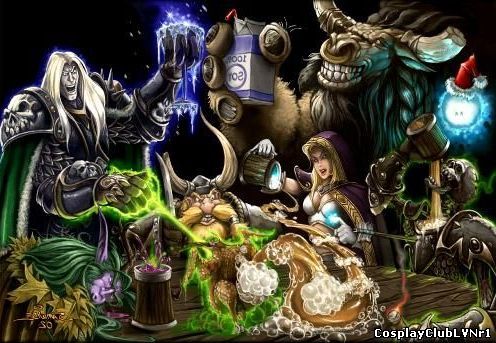
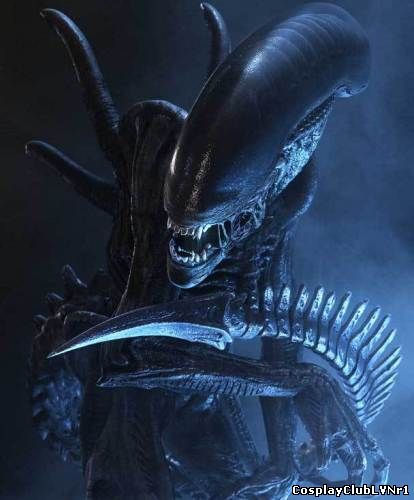
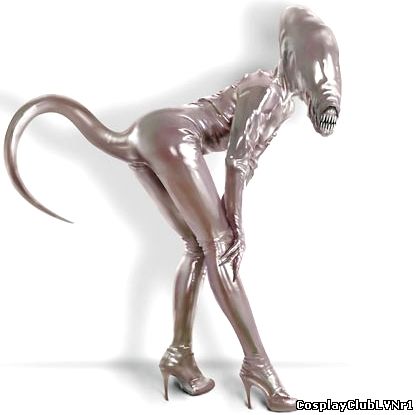
1. Alien - Ridley Scott chose not to show the Alien in full through most of the film, showing only pieces of it while keeping most of its body in shadow in order to heighten the sense of suspense and terror. The audience could thus project their own fears into imagining what the rest of the creature might look like: "Every movement is going to be very slow, very graceful, and the Alien will alter shape so you never really know exactly what he looks like." The Alien has been referred to as "one of the most iconic movie monsters in film history" in the decades since the film's release, being noted for its biomechanical appearance and sexual overtones. Film critic Roger Ebert notes that "Alien uses a tricky device to keep the alien fresh throughout the movie: It evolves the nature and appearance of the creature, so we never know quite what it looks like or what it can do..
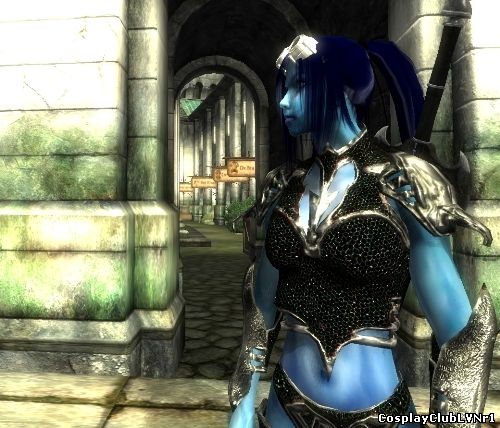
2. Dark elves (Kal'dorei)-(Old Norse: Dökkálfar, usually called the Svartálfar "black elves") are known as a class of elves living underground in Old Norse mythology, the counterparts to the Ljósálfar ("Light-elves"). They are very similar to dwarves as they mainly live in places where there is little light, though unlike both high elves and dwarves the dark elves are an evil race that like suffering and pain. The dark elves originated in the Eddic and Germanic myths. They are more recently described as a race of elves and sometimes counterparts to the high elves in fiction and modern popular culture.
Dark elves are also now a common character in modern fantasy fiction, although usually very highly embellished with outside influences and rarely displaying many elements of the ancient folktales that inspired their inclusion, throughout fantasy fiction of many types. Their appearance varies considerably from representation to representation, as does their given background.
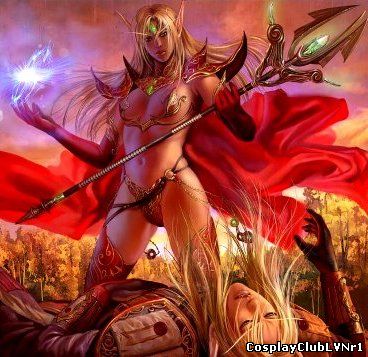
3. Blood Elves (Sin'dorei)-for nearly seven thousand years, the high elves cultivated a shining magical kingdom deep within the forests of northern Lordaeron. But five years ago, the undead Scourge invaded Quel'Thalas and drove the elves to the brink of extinction. Led by the evil death knight Arthas, the Scourge destroyed the mystical Sunwell, thereby severing the elves from the source of their arcane power. Though the scars of that conflict are evident, the remaining elves have banded together and retaken much of their homeland. Calling themselves "blood elves", these grim survivors are committed to regaining the vast powers they once commanded. Inspired by the leadership of their beloved prince, Kael'thas Sunstrider, the blood elves now seek out new sources of arcane magic and the means of defending their land against the undying horrors of the Scourge.
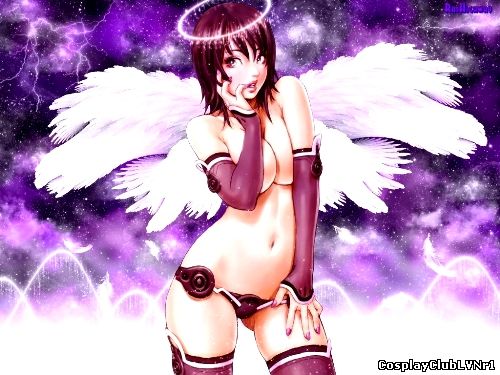
4. Angels-An angel is a spiritual supernatural being found in many religions. Although the nature of angels and the tasks given to them vary from tradition to tradition, in Christianity, Judaism and Islam, they often act as messengers from God. Other roles in religious traditions include acting as warrior or guard; the concept of a "guardian angel" is popular in modern Western culture.
Angels are usually viewed as emanations of a supreme divine being, sent to do the tasks of that being. Traditions vary as to whether angels have free will or are merely extensions of the supreme being's will. While the appearance of angels also varies, many views of angels give them a human shape.
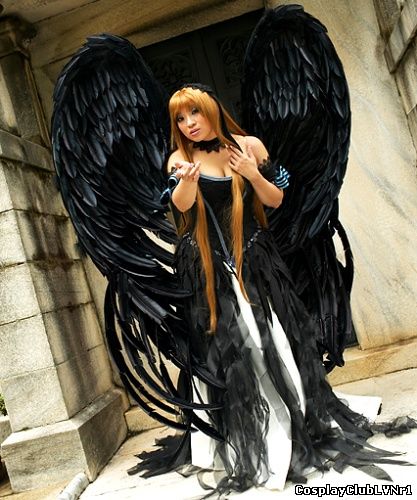
5. Archangels-Archangels are members of the second choir of angels. Archangels are found in a number of religious traditions, including Christianity, Islam, Judaism, and Zoroastrianism. The only archangel ever clearly named as being of the order in the Bible is Michael. Gabriel, named in Luke, is considered to be an archangel, as are Raphael (mentioned in the Book of Tobit) and Uriel (mentioned in the Book of Enoch). The archangels Michael, Gabriel and Raphael are venerated in the Roman Catholic Church with a feast on 29 September. 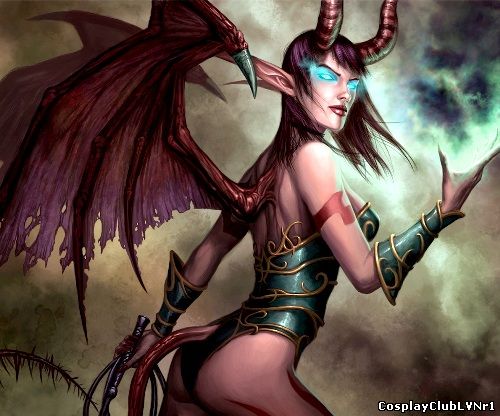
6. Gargoyles-In contemporary fiction, gargoyles are typically depicted as a (generally) winged humanoid race with demonic features: generally horns, a tail, and talons. They are said to be guardians of the building on which they reside. These fictional gargoyles can generally use their wings to fly or glide, and are often depicted as having a rocky hide, or being capable of turning into stone in one way or another. The term gargoyle is most often applied to medieval work, but throughout all ages some means of water diversion, when not conveyed in gutters, was adopted. In Egypt, gargoyles ejected the water used in the washing of the sacred vessels which seems to have been done on the flat roofs of the temples. In Greek temples, the water from roofs passed through the mouths of lions whose heads were carved or modeled in the marble or terra cotta cymatium of the cornice.
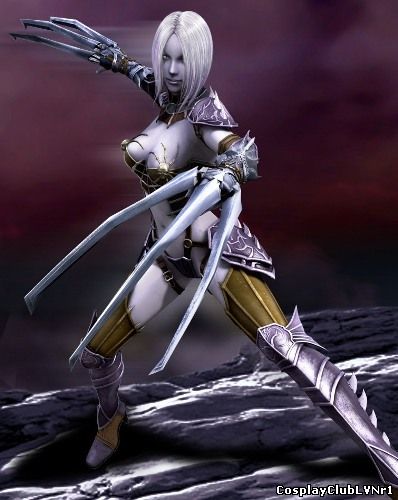
7.Vails-Vare one of four playable Races and are joined with the Nordein to form the Union of Fury.
Intelligent and swift, cunning and spiritual, the Vail are the chosen of the beautiful Goddess of Darkness. One of the two races that are descendents of the Dumianas, the Vail, while exotic and mysterious in appearance, are not the war-like people most expect them to be. Ferocious and treacherous only when necessary, the Vail seek to find a state of equilibrium in their surroundings. Not as strong as some of the other races, the Vail use stealth and the mystical arts when in battle. 
8. Light Elves-In Norse mythology, the light elves (Old Norse: Ljósálfar) live in the Old Norse version of the heavens, in the place called Álfheim underneath the place of the Gods. The idea of the light elf is one of the most ancient records of elves (Old Norse: álfr singular, álfar plural) preserved in writing, as close to the prototypical idea of the elf as we might get (Nordic mythology preserved an ancient German paganism). The "light elf" designation is in contrast to the dark elf who is an earth dweller and may be a dwarf.
According to the early Nordic source that mentions light versus dark elves, the Nordic Eddas of the 13th century, the light elves are bright and radiant.
The light elf may have received its name and place from the Eddic references that the Álfheim belonged or was led by Freyr, god of the sun and sunlight. The placement of the elves, per Snorri, was in the heaven not quite as high as the gods, from which they could interact with the gods. Hence they were positioned between heaven and man, similar to the Semitic notion of the angels.
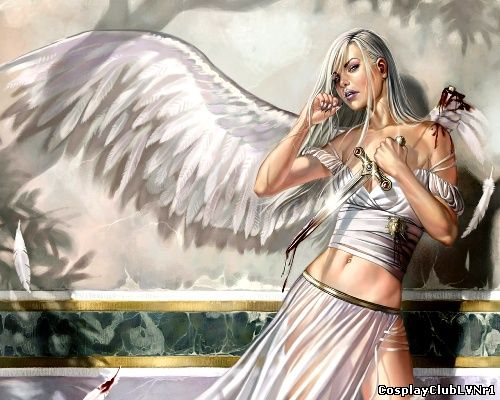
9. Kamael-are introduced in the second saga of Lineage II, named The Chaotic Throne. They appear as an ash-skinned elf with one angel wing. The Kamael are one of the two races in Lineage II who only have a fighter class (the other race being the dwarves). They are the only race in the game with sex-dependant classes.
The Kamaels were created in the era of myth by the giants to make war on the gods. They have only one wing because they lost the ability to harvest their true power. Some have been able to uncover their true potential. In their final form, they transform into a dark angel.
Allen 'Delsyn' Rausch called the Kamael "an interesting race in that, unlike other Lineage II races, they focus specifically on the warrior path with high-level class paths (Ranged warrior Arbalester females or melee-oriented Berserker males) segregated by sex.
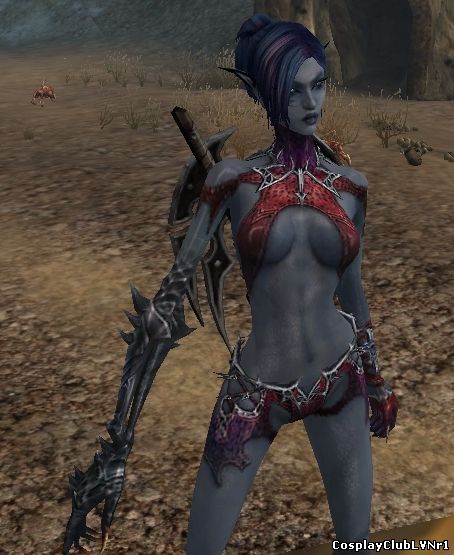 10. Kruxena-are a vampire and cyborg-looking race. They are Physically and Spiritually Superior, yet at the same time uncooperative, lacking compassion and tenacity, and inhumane. They may choose to become either a Rogue or Soul Hunter.From Requiem Bloodymare mmorpg game. 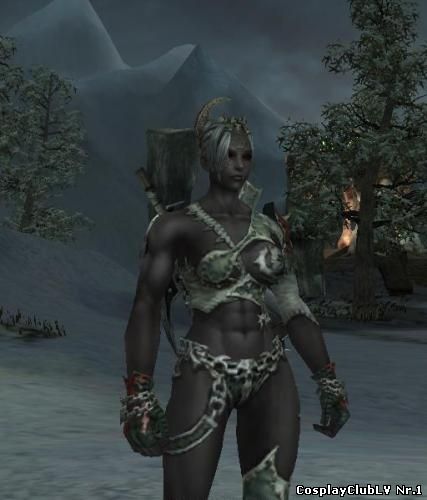
11. Bartuk-The Bartuk consist of brutes. They feature High Strength and Solidarity. They have Low Spirit and Susceptible Minds. They can choose to become either Warriors or Shamans. 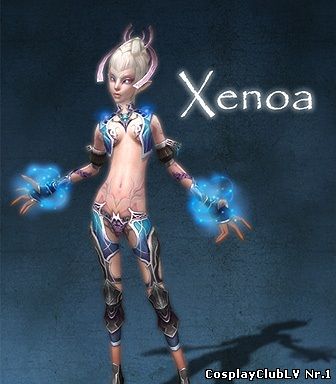
12. Xenoa-have an unmatched high intelligence. In spite of their low physical power, they have good hand-skills and eyesight. To make up for their weakness, they have upgraded their long-distance attacks and knowledge-based magic. Xenoa can choose to become a Hunter or battle magician to start. 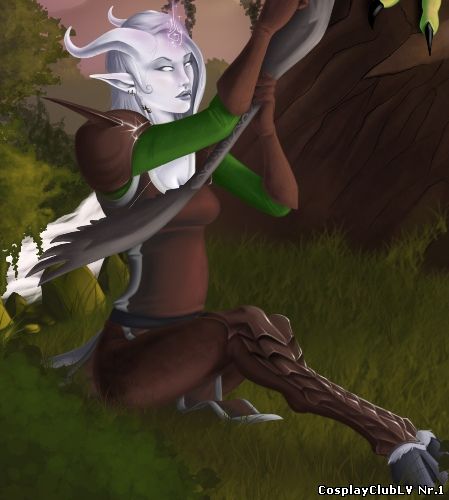
13. Draenei are the last of the original Eredar, who, led by the prophet Velen, one of the three great lords of the Eredar, fled their homeworld of Argus to escape the corruption that the Dark Titan Sargeras was spreading. The two other Eredar lords, Archimonde and Kil'Jaeden, were seduced by Sargeras, after he promised them unfathomable power in exchange for their service. They accepted willingly, and thus the foundations of the Burning Legion were established. The exiled Eredar travelled through the cosmos aboard the naaru Dimensional Ship, Oshu'gun, and landed on a remote world. Draenei have skin ranging from purple to pale blue, and both genders are relatively tall compared to humans, have cloven, goat-like hooves, and tails that resemble those of a lizard. Males usually have tentacle-like appendages extending from their chin, and occasionally large, complex structures on their forehead, while females have two horns on their temples extending backwards and thinner versions of the male's appendages hanging from behind the back of the jaw.
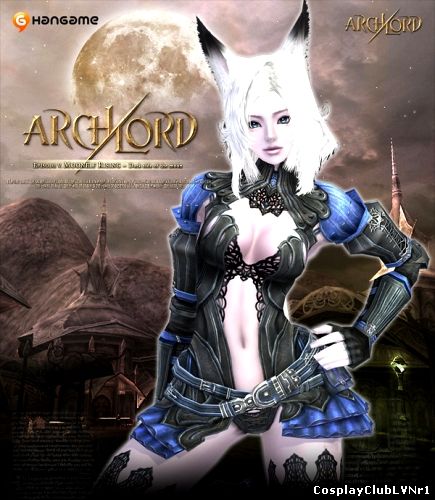
14. Moon Elves-are a race that were once considered Elves, but Different. Once one of three of the great elf races that inhabited the Nordenland during the 2nd period, they were the first race to fall in the Great War. As a result of this devastating conflict most of the male population was annihilated. A few males were able to escape together with the women; they hid themselves in the shadows from those in the outside world. As time went on, the women took it upon themselves to replace the male roles in their society, and thus learned to master the fine arts of hunting and craftmenship. The few remaining men were forbidden to enter combat, as they were too precious a commodity. Through a cruel twist of fate the remaining men only seemed capable of producing more women. This forced the Moon Elves to step from their shadowy world and start exploring for additional breeding options; this is how they came to be known by the Orcs and Humans. They were so ashamed of this action that they chose to hide themselves in the dark for centuries, only revealing themselves once their land was invaded by the Orcs and Humans.
Moon Elves can be Rangers and Elementalists.

15. Predator-film uses the story of the hunter being the hunted from The Most Dangerous Game-inspired stories. The Predator is an alien humanoid with advanced technology and a penchant for hunting difficult game. With interstellar travel capability, multi-spectrum vision enhancement (although the film only shows him seeing the infrared), and a light-bending armor suit with equally advanced weaponry, the Predator is able to travel anywhere, hunt anything, and usually succeed.
Predator is the first of the film series, as the creature descends on Earth interested in hunting exotic game - in this case humans. Information released after the film reveals the Predator scans the Earth's broadcast frequencies and chooses Central America as a location. A special unit is also en route to the same location, and during their operations stumble upon the Predator. The unit possesses significant firepower, which attracts the creature's attention. During the film's final conflict, only one of the unit is left and a cat-and-mouse game begins with each adversary hunting the other. 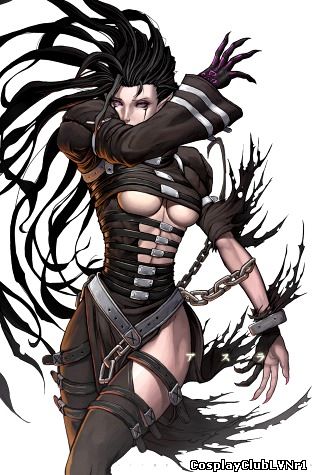
16. Asura-are the dark-element race of Rappelz. They also possess fire- and wind-based skills. They are primarily an offense-oriented race. They have lower health and defense than the other two races, but they also have greater evasion. Their racial skill is "Deep Evasion", which increases their evasive ability for a short time.
Stepper - The Stepper is the starting class for the Asura. The basic skills Smite and Deep Evasion are learned by this class.
Strider - The Strider is an assassin-like class that uses high evasion and attack speed, hitting fast but not particularly strong. They can specialize in blades (swords or dirks) or crossbow, and have no self-heal ability. They do, however, wear warrior armour.
Assassin - The Assassin specializes in twin dirks or swords, and have a large range of offensive melee skills and stealth skills to hide from their enemies.
Shadow Hunter - The Shadow Hunter is the second job class of Striders which specializes in crossbows. They have many ranged skills and debuffing abilities.
Dark Magician - The Dark Magician uses spells that drain and weaken the enemy. They have many offensive spells and debuffs.
Chaos Magician - The Chaos Magician is the second job class of Dark Magicians which concentrates on high damage spells, but has a low defense against physical attacks.
Warlock - The Warlock is the second job class which concentrates more on debuffs and curse magic. This makes them more party-orientated because they have less attack power on their own than the Chaos Magician.
Sorcerer - The Sorcerer focuses on offense and absolute control of their pets. Sorcerers can exchange HP with their pets and leech their pets' strength.
Battle Summoner - The Battle Summoner is an extension of the sorcerer. They have offensive potential in both melee and magic, and more offensive buffs for their pets.
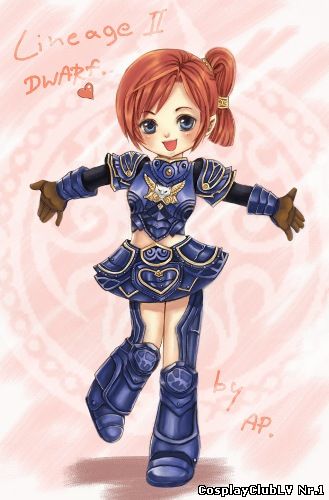
17. Dwarfs-A dwarf is a creature from Germanic mythologies, fairy tales, fantasy fiction, and role-playing games.
It usually has magical talents, often involving metallurgy.
The original concept of dwarves is very difficult to determine.
The sources closest to the original Germanic mythology come from Norse Mythology, but even these are scarce and varied. Sources have gradually given dwarves more comical and superstitious roles.
Dwarves were certainly humanoid, but sources differ over their height, their lifestyles, and their similarity to elves.
Considering early sources, and considering the dwarves' nature, original dwarves seem fully human height.
They had strong associations with death : paled skin; dark hair; connections with the earth; their role in mythology.
They followed animistic traditions, showing similarities to such concepts of the dead. They were similar to others from the 'Vættir' family, such as elves.

18. Orcs-Orc (OR'k) is a word used to refer to various races of tough and warlike humanoid creatures in various fantasy settings,
appearing originally in the stories of Middle-earth written by J. R. R. Tolkien and derivative fictions.
Orcs are often portrayed as misshapen humanoids with brutal, warmongering, sadistic, yet cowardly tendencies,
although some settings and writers describe them as a proud warrior race with a strong sense of honor.
They are variously portrayed as physically stronger or weaker than humans, but always high in numbers.
They often ride wolves or wargs. In many role-playing and computer games, though not in Tolkien's works,
Orcs have green skin (earning the name "Greenskins" in such games as Warhammer Fantasy).
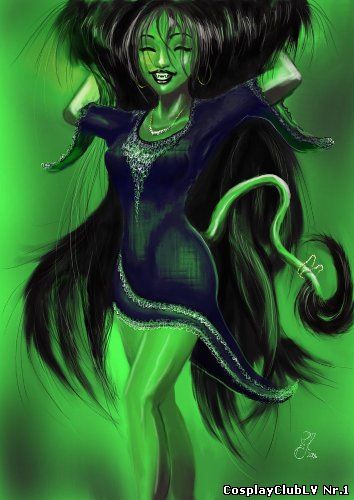
19. Trolls-The trolls of the Warcraft Universe differ significantly from traditional depictions in fiction, instead being very similar to the trolls of the Dungeons & Dragons franchise. They have a vast and very diverse background with many different tribes, of which only the Darkspear are playable. The four major troll ethnicities include Forest, Jungle, Ice, and Desert. Other notable mentions include Dark trolls, about which very little is known, Zanzil the Outcast and his Followers, and the earliest of all trolls - the Zandalar tribe; from which all other trolls are said to have descended. Inside each of the four ethnicities, trolls are further divided into separate tribes with various allegiances.
During the second war, the Forest Trolls of Lordaeron allied with the Horde to help combat their ancient enemies, the High Elves, who had aligned with the Alliance. This alliance dissipated upon defeat of the Horde and internment of the remaining Orc clans.
The playable trolls, the Darkspear, are led by Vol'jin and fled the continent after splitting off from the Gurubashi (Jungle) Empire. When Thrall and his orc forces left the Eastern Kingdoms to sail to Kalimdor they crashed on an island near the centre of the ocean where they were met by the troll Sen'jin. Sen'jin, Thrall, and several other orcs and trolls were captured by murlocs soon after their arrival. Thrall managed to break from his cell and free many, but Sen'jin was sacrificed by a murloc sorcerer. It was in Sen'jin's honor that the Darkspear were allowed into the Horde.
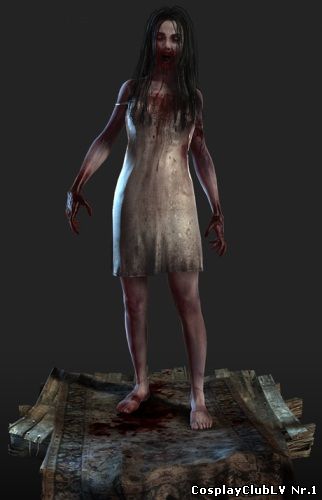
20. Undead (Zombies)-A zombie is a reanimated human corpse. Stories of zombies originated in the Afro-Caribbean spiritual belief system of Vodou, which told of the people being controlled as workers by a powerful sorcerer. Zombies became a popular device in modern horror fiction, largely because of the success of George A. Romero's 1968 film Night of the Living Dead.
There are several possible etymologies of the word zombie. One possible origin is jumbie, the West Indian term for "ghost". Another is nzambi, the Kongo word meaning "spirit of a dead person." According to the Merriam-Webster dictionary, the word entered English circa 1871; it's derived from the Louisiana Creole or Haitian Creole zonbi, which in turn is of Bantu origin. A zonbi is a person who is believed to have died and been brought back to life without speech or free will. It is akin to the Kimbundu nzúmbe ghost.
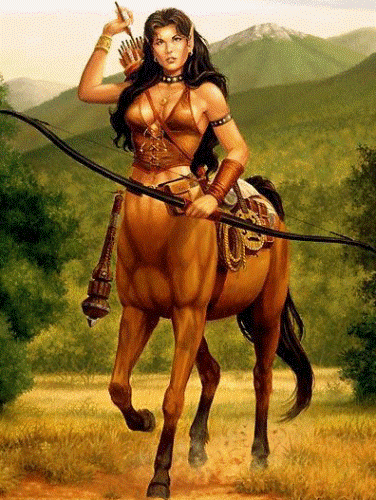
21. Centaur-In Greek mythology, the centaurs (from Ancient Greek: Κένταυροι - Kéntauroi) are a race of creatures composed of part human and part horse. In early Attic vase-paintings, they are depicted as the torso of a human joined at the (human's) waist to the horse's withers, where the horse's neck would be.
This half-human and half-animal composition has led many writers to treat them as liminal beings, caught between the two natures, embodied in contrasted myths, and as the embodiment of untamed nature, as in their battle with the Lapiths, or conversely as teachers, like Chiron.
The centaurs were usually said to have been born of Ixion and Nephele (the cloud made in the image of Hera). Another version, however, makes them children of a certain Centaurus, who mated with the Magnesian mares. This Centaurus was either the son of Ixion and Nephele (instead of the Centaurs) or of Apollo and Stilbe, daughter of the river god Peneus. In the latter version of the story his twin brother was Lapithus, ancestor of the Lapiths, thus making the two warring peoples cousins.
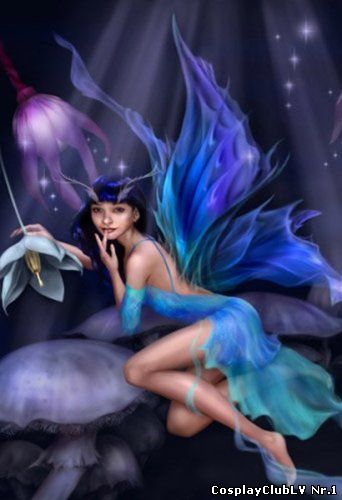
22. Pixie-Pixies (also Piskies and Pigsies as they are sometimes known in Cornwall) are mythical creatures of folklore, considered to be particularly concentrated in the areas around Devon and Cornwall, suggesting some Celtic origin for the belief and name. They are usually depicted with pointed ears, and often wearing a green outfit and pointed hat. Sometimes their eyes are described as being pointed upwards at the temple ends. These are Victorian Era conventions and not part of the older mythology.Pixies are variously described in folklore and fiction. In the legends associated with Dartmoor, Pixies (or Piskeys) are said to disguise themselves as a bundle of rags to lure children into their play. The pixies of Dartmoor are fond of music and dancing. These Pixies are said to be helpful to normal humans, sometimes helping needy widows and others with housework.They are often ill clothed or naked. Lack of fashion sense has been taken by Rachael de Vienne, a fantasy writer, to mean that Pixies generally go unclothed, though they are sensitive to human need for covering. William Crossing noted a Pixie's preference for bits of finery: "Indeed a sort of weakness for finery exists among them, and a piece of ribon appears to be ... highly prized by them." In Ms de Vienne's book, the main character, a pixie child, delights in ribons made from her father's shirt.
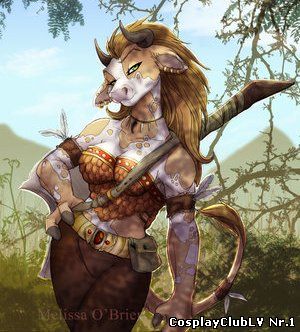
23. Tauren (Minotaur)-are one of the oldest races in Azeroth, a proud and tenacious race with bull-like features and a culture that is very similar to an evolved Native American culture. They are druidic, shamanistic, peaceful, and powerful beings. They have large hooves in place of feet, three fingered hands, and a towering body structure. The largest Tauren tribe, the Bloodhoof Tauren, reside on the top of a cluster of tall mesas known as Thunder Bluff, in the grasslands of Mulgore. They are led by the High Chieftan Cairne Bloodhoof.Mulgore, in Kalimdor, was fought over by the defending Tauren and the marauding Centaur. The Tauren would have been nearly wiped out, but the Orcish Horde, led by the Warchief Thrall, intervened and came to the aid of the Tauren at the request of Cairne Bloodhoof. The Tauren were then honor-bound and allied themselves with the Horde. 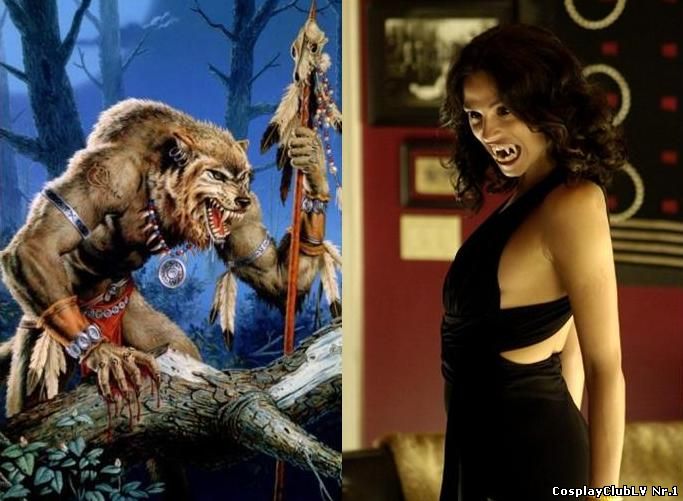
24. Werewolf (Lycanthropes)-from the Greek λυκάνθρωπος, λύκος (wolf) and άνθρωπος (human, man), are mythological or folkloric humans with the ability to shapeshift into wolves or anthropomorphic wolf-like creatures, either purposely, by being bitten by another werewolf, or after being placed under a curse. This transformation is often associated with the appearance of the full moon, as popularly noted by the medieval chronicler Gervase of Tilbury, although it may have been recognized in earlier times among the ancient Greeks through the writings of Petronius. Werewolves are often granted extra-human strength and senses, far beyond those of both wolves or men. The werewolf is generally held as a European character, although its lore spread through the world in later times. Shape-shifters, similar to werewolves, are common in tales from all over the world, most notably amongst the American Indians, though most of them involve animal forms other than wolves. Werewolves are a frequent subject of modern fictional books and films, although fictional werewolves have been attributed traits distinct from those of original folklore, most notably the vulnerability to silver bullets. Werewolves continue to endure in modern culture and fiction, with books, films and television shows cementing the werewolf's stance as a dominant figure in horror.

25. Harpy-In Greek mythology, a harpy ("snatcher", from Latin: harpȳia, Greek: ἅρπυια, harpūia) was any one of the mainly winged death-spirits best known for constantly stealing all food from Phineas. The literal meaning of the word seems to be "that which snatches" as it comes from the ancient Greek word harpazein (ἅρπάξειν), which means "to snatch".
The harpy could also bring life. A harpy was the mother by the West Wind Zephyros of the horses of Achilles (Iliad xvi. 150). In this context Jane Harrison adduced the notion in Virgil's Georgics that mares became gravid by the wind alone, marvelous to say (iii.274).
Though Hesiod (Theogony) calls them two "lovely-haired" creatures, harpies as beautiful winged bird-women are a late development, in parallel with the transformation of the siren, a "creature malign though seductive in Homer, but gradually softened by the Athenian imagination into a sorrowful death angel". On a vase in the Berlin Museum, a harpy has a small figure of a hero in each claw, but her head is recognizably a Gorgon, with goggling eyes, protruding tongue, and tusks.
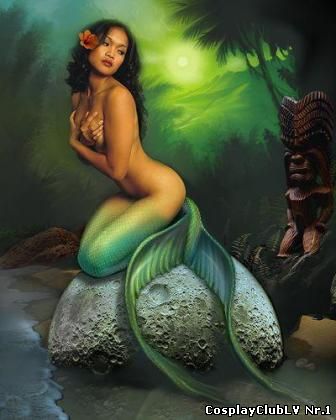
26. Mermaid-is a mythological aquatic creature that is half human, half aquatic creature (e.g. a fish or dolphin). Various cultures throughout the world have similar figures. The word is a compound of mere, the Old English word for "sea," and maid, which has retained its original sense. Mermaids appear to have the tail of a fish and the torso of a woman.
Much like sirens, mermaids would sometimes sing to people and gods and enchant them, distracting them from their work and causing them to walk off the deck or run their ships aground. Other stories have them squeezing the life out of drowning men while attempting to rescue them. They are also said to take humans down to their underwater kingdoms. In Hans Christian Andersen's The Little Mermaid it is said that they forget that humans cannot breathe underwater, while others say they drown men out of spite.
The sirens of Greek mythology are sometimes portrayed in later folklore as mermaid-like; in fact, some languages use the same word for both bird and fish creatures, such as the Maltese word 'sirena'. Other related types of mythical or legendary creature are water fairies (e.g. various water nymphs) and selkies, animals that can transform themselves from seals to humans.
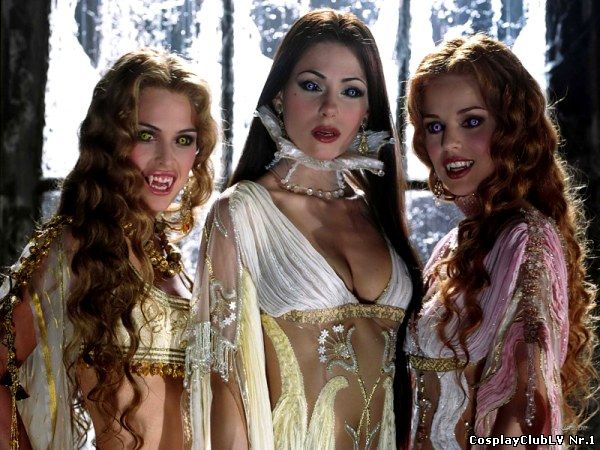
27. Vampires-are mythological or folkloric revenants who subsist by feeding on the blood of the living. In folkloric tales, the undead vampires often visited loved ones and caused mischief or deaths in the neighbourhoods they inhabited when they were alive. They wore shrouds and were often described as bloated and of ruddy or dark countenance, markedly different from today's gaunt, pale vampire which dates from the early Nineteenth Century. Although vampiric entities have been recorded in most cultures, the term vampire was not popularised until the early 18th century, after an influx of vampire superstition into Western Europe from areas where vampire legends were frequent, such as the Balkans and Eastern Europe, although local variants were also known by different names, such as vampir (вампир) in Serbia, vrykolakas in Greece and strigoi in Romania. This increased level of vampire superstition in Europe led to mass hysteria and in some cases resulted in corpses actually being staked and people being accused of vampirism.
In modern times, however, the vampire is generally held to be a fictitious entity, although belief in similar vampiric creatures such as the chupacabra still persists in some cultures. Early folkloric belief in vampires has been ascribed to the ignorance of the body's process of decomposition after death and how people in pre-industrial societies tried to rationalise this, creating the figure of the vampire to explain the mysteries of death. Porphyria was also linked with legends of vampirism in 1985 and received much media exposure, but this link has since been largely discredited.
The charismatic and sophisticated vampire of modern fiction was born in 1819 with the publication of The Vampyre by John Polidori; the story was highly successful and arguably the most influential vampire work of the early 19th century. However, it is Bram Stoker's 1897 novel Dracula that is remembered as the quintessential vampire novel and provided the basis of the modern vampire legend. The success of this book spawned a distinctive vampire genre, still popular in the 21st century, with books, films, and television shows. The vampire has since become a dominant figure in the horror genre.
|




